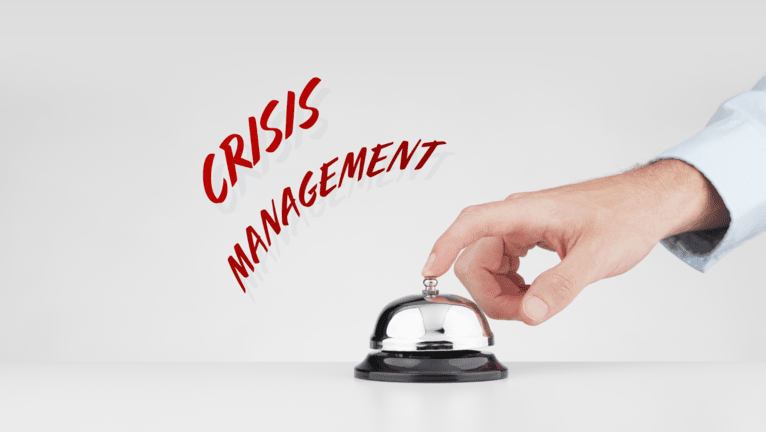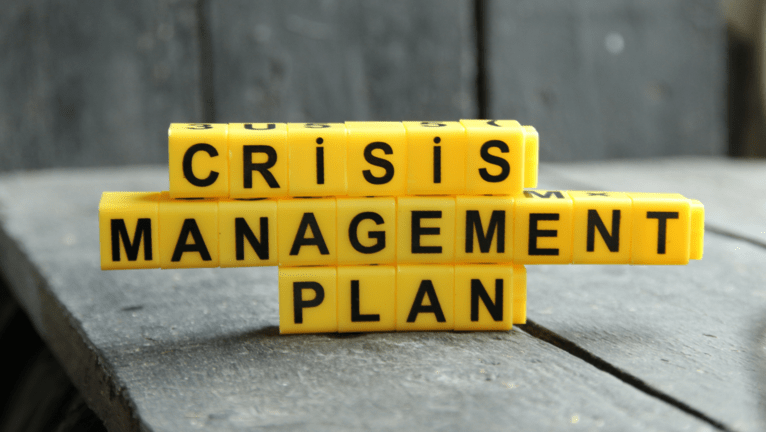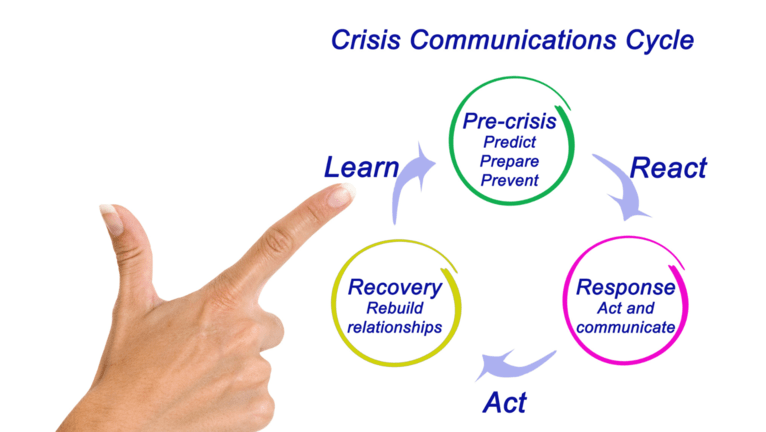Crisis Communication Examples
Crisis management is a whole process of preventing, acting, and recovering from a crisis, and fortunately, we can easily access all the available crisis communication examples and learn from brands.
More precisely, crisis communication is how companies and brands react to a crisis or unexpected event that could harm their reputations or stakeholders. It refers to the strategic process of communicating information about a crisis or emergency situation to the public, stakeholders, and employees. In addition, it involves a variety of tactics, including clear and timely messaging, proactive outreach to stakeholders, transparency and honesty, and coordinated efforts across multiple channels.

Contents
What is Crisis Management?
Crisis management is a corporate strategy that aims to help organizations deal with an adverse event. A negative event can be anything from a minor brand crisis or PR crisis on Twitter to an incident involving serious injury or death. Managing a crisis involves developing a plan and coordinating resources to address the needs of the affected parties while also repairing the brand’s reputation.
Crisis management is a process that prepares managers and employees to face unforeseen situations and circumstances in the organization. Having one in place allows them to manage their emotions, minimize risk, and respond effectively to the changes at the moment while under pressure. It’s also necessary to prevent the situation from worsening for customers and your business.
What is a crisis management plan?
A crisis management plan is a comprehensive document that outlines the crisis communication strategy, procedures, and protocols an organization will follow during a crisis or unexpected event that could harm the organization, its stakeholders, or its reputation.

PR crisis management involves strategies and tactics to address and mitigate negative publicity, manage stakeholders' perceptions, and preserve a company's reputation. Here are some PR crisis management techniques.
The purpose of crisis management
Effective crisis management aims to ensure that accurate and consistent information is shared with all relevant parties and that the organization is perceived as responsive, trustworthy, and empathetic.
Examples of crises that may require effective communication include natural disasters, product recalls, workplace accidents, data breaches, and reputational issues. In each case, crisis communication plays a critical role in managing the situation and mitigating its impact.
Which are the key elements of an efficient crisis communication strategy?
No matter if the brand it’s dealing with a strong crisis or a mild one, an efficient crisis communication strategy should have the following key elements:
- Preparedness: a crisis management and communication plan should be in place before a crisis occurs. This plan should outline the roles and responsibilities of individuals (PR professionals, PR agencies), key takeaways, messages, communication channels (make use of all social media tools, press releases, and video campaigns), and procedures for responding to different types of crises. It should be regularly updated and tested.
- Timeliness: communication during a crisis needs to be timely. Delays in communication can lead to misinformation, rumors, and confusion. Therefore, the crisis team needs to quickly assess the situation and communicate with all stakeholders as soon as possible.
- Transparency: openness and honesty are essential in crisis communication. Providing accurate and complete information to stakeholders is critical to maintaining trust and credibility. Concealing or withholding information can lead to speculation and mistrust.

- Consistency: consistency in messaging is vital in crisis communication. All stakeholders should receive the same message to avoid confusion and conflicting information.
- Empathy: crisis communication should be empathetic to the concerns of stakeholders. The organization should acknowledge the impact of the crisis and provide support and assistance to those affected.
- Accessibility: communication channels should be accessible to all stakeholders. The organization should consider the needs of people with disabilities, non-English speakers, and those with limited access to technology.
- Proactivity: crisis communication should be proactive. The organization should anticipate potential crises and take preventive measures to minimize the impact.
- Evaluation: after a crisis, the crisis communication plan should be evaluated to identify areas for improvement - to create a crisis management strategy for an unpredictable crisis. The organization should learn from the experience and use the insights to improve its preparedness for future crises.
Crisis communication examples
We can learn a lot from past times of crisis from other brands, so here are some examples of crisis management:
- Tide Pod challenge
In 2018, * Tide successfully addressed the Tide Pod challenge, which had caused numerous teenagers to end up in the hospital after ingesting laundry detergent pods as part of a misguided online trend. Even though the pods are not meant for consumption, some cases were not accidental, making the situation even more concerning. Tide teamed up with famous football player Rob Gronkowski in early 2018 to launch a campaign to discourage dangerous behavior. By leveraging Gronkowski's fame and influence, the company sought to shift the narrative and make the Tide Pod challenge unappealing. This episode serves as a great example of effective crisis communication. Brands can learn from Tide's approach and consider partnering with influencers and celebrities to address crises.
- Tylenol Scandal
In 1982, seven people in the Chicago area died after consuming Extra-Strength Tylenol capsules that had been tampered with cyanide. The company, Johnson & Johnson, quickly responded by recalling 31 million bottles of Tylenol, halting all advertising for the product, and offering free replacements to customers who returned their Tylenol bottles. Johnson & Johnson also worked with law enforcement and the media to provide updates on the investigation and ultimately implemented tamper-resistant packaging for all its products. This quick and effective response has been lauded as a textbook example of crisis communication.
- BP Oil Spill
In 2010, the Deepwater Horizon oil rig exploded, causing an oil spill that released millions of barrels of oil into the Gulf of Mexico. Responsible for the disaster, BP faced a long and difficult crisis communication challenge. The company set up a website to provide updates on the cleanup effort and also used social media to engage with stakeholders and respond to criticism. BP also established a $20 billion compensation fund for individuals and businesses affected by the spill. Despite the initial criticism of BP's response, the company's communication efforts eventually earned praise for their transparency and commitment to addressing the damage caused by the spill.
- United Airlines Passenger Removal
In 2017, a video of a passenger being forcibly removed from a United Airlines flight went viral and sparked widespread outrage. United initially issued a statement defending its actions but later apologized and promised to conduct an internal review of its policies. The company also took steps to compensate the affected passenger and to improve its customer service policies. While the incident undoubtedly damaged United's reputation, the company's response was generally seen as effective in mitigating the damage and preventing similar incidents in the future.
References
SproutSocial, Crisis communications: What it is and examples brands can learn from, https://sproutsocial.com/insights/crisis-communication-examples/